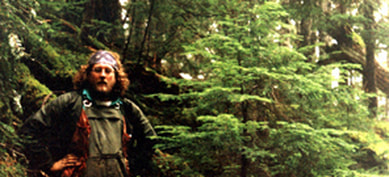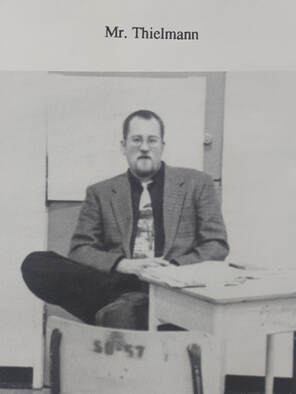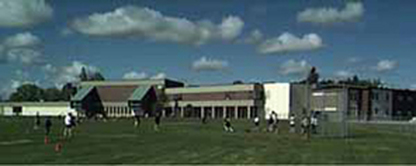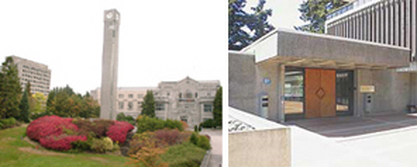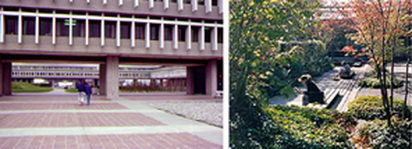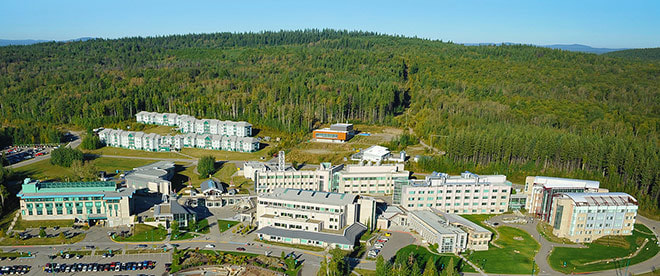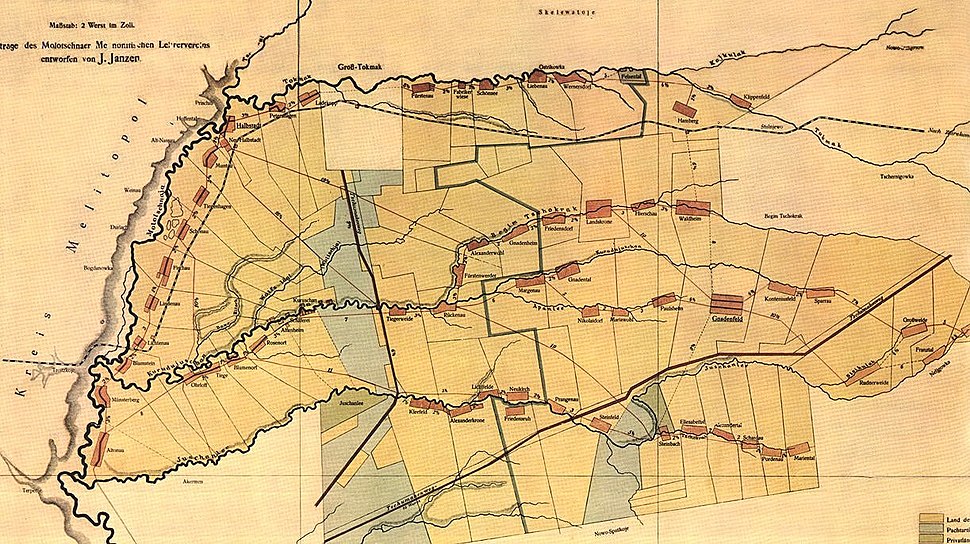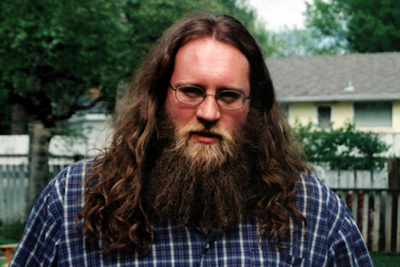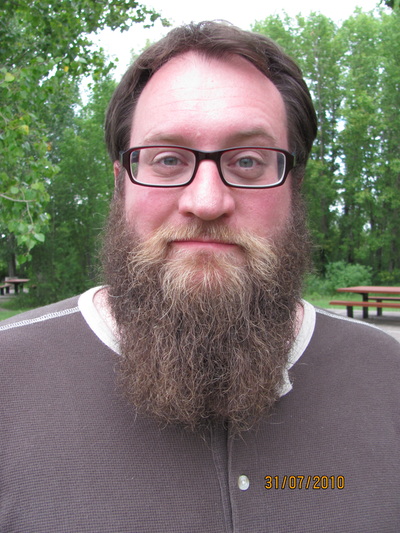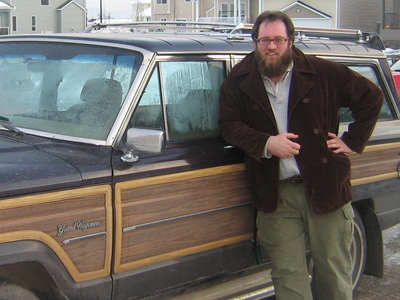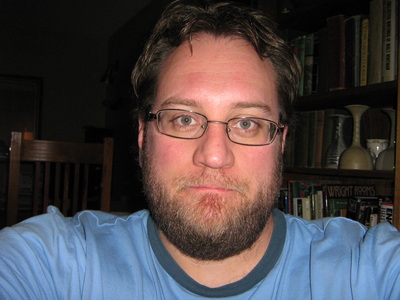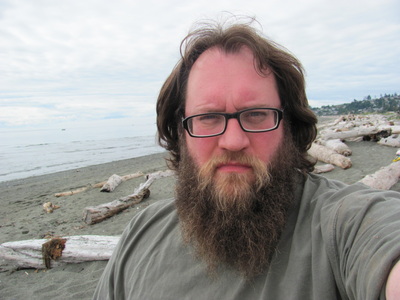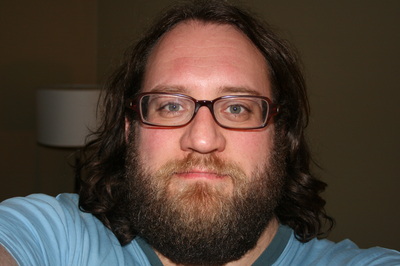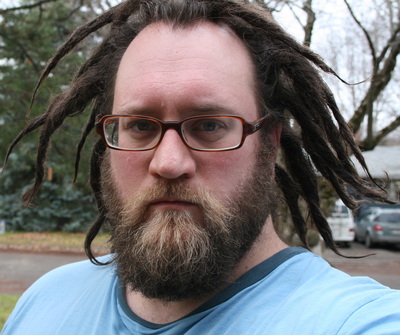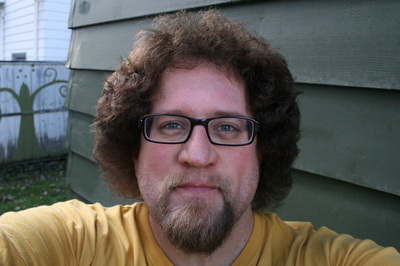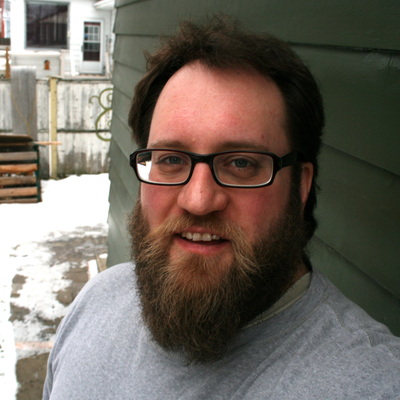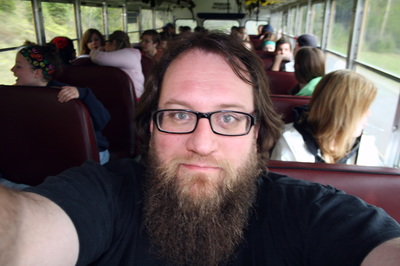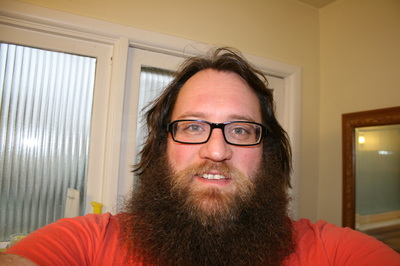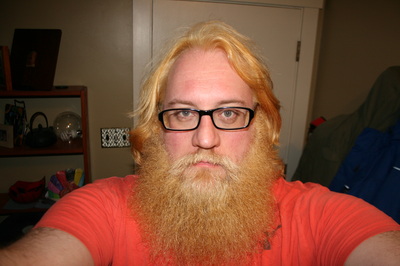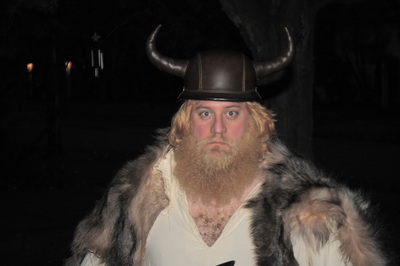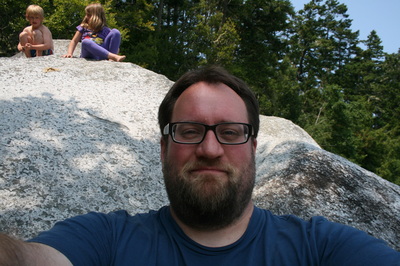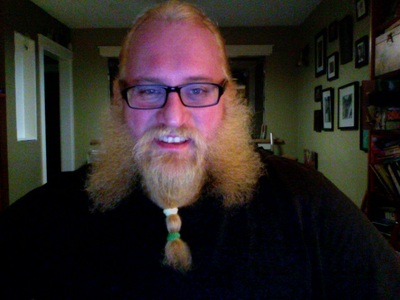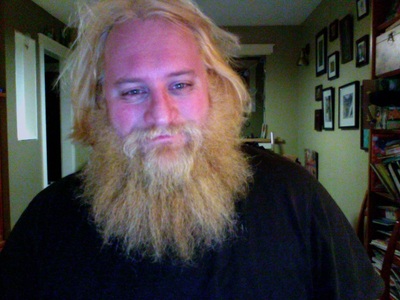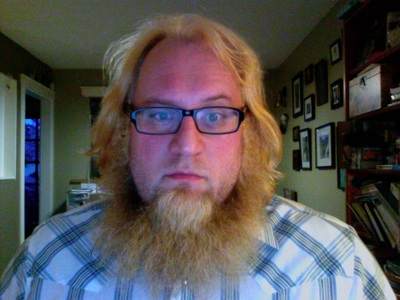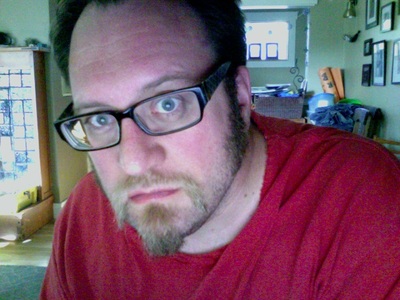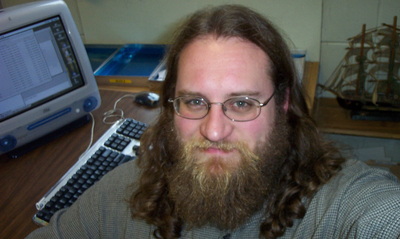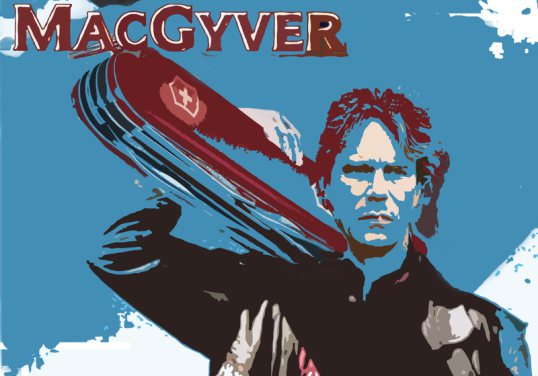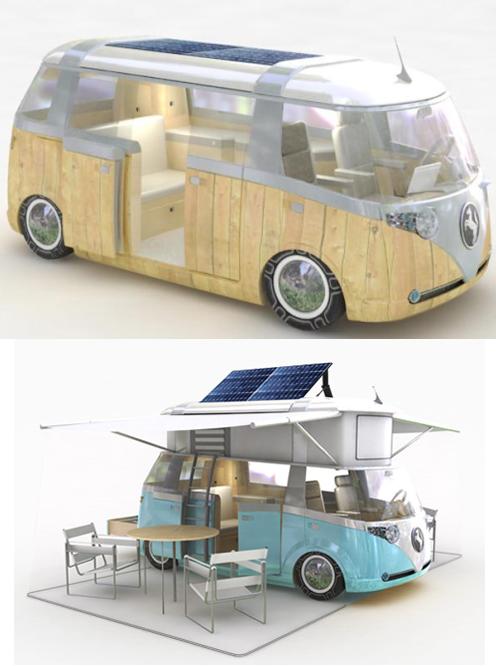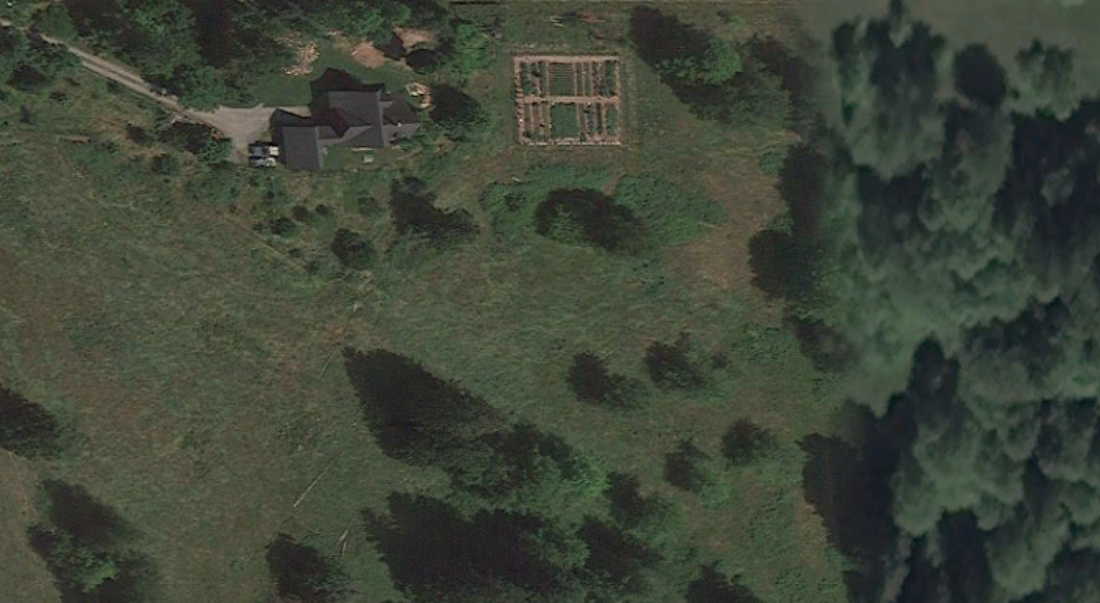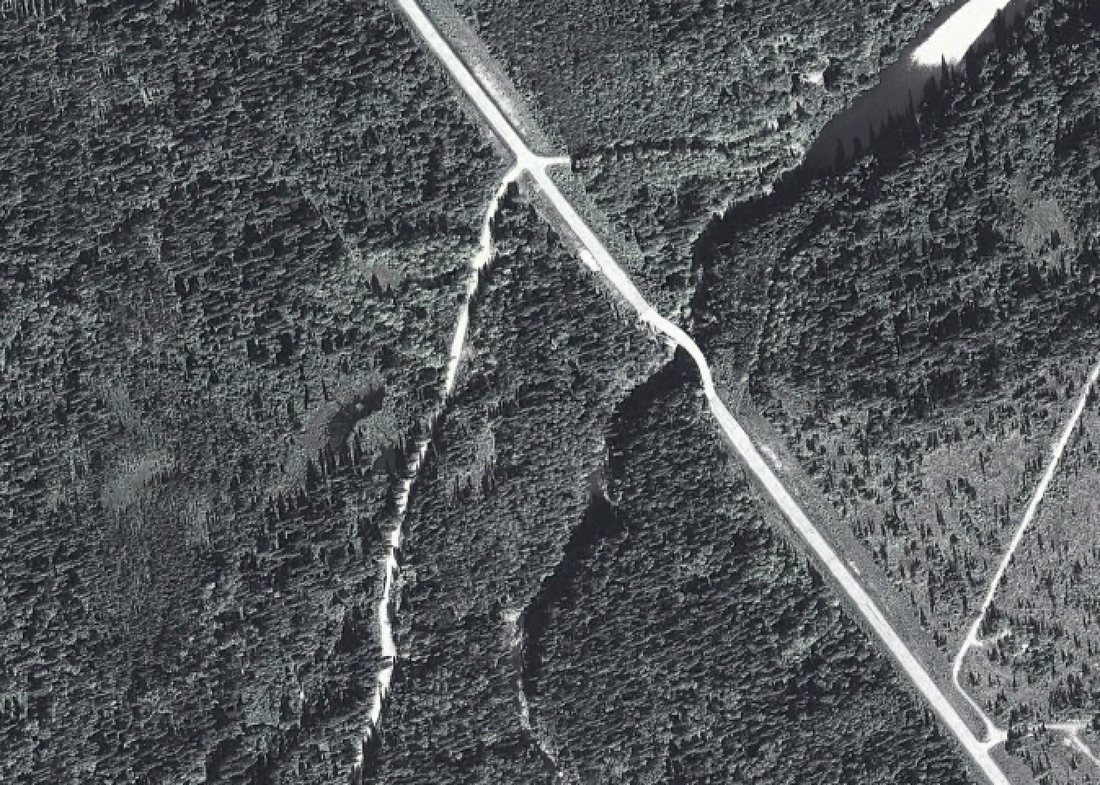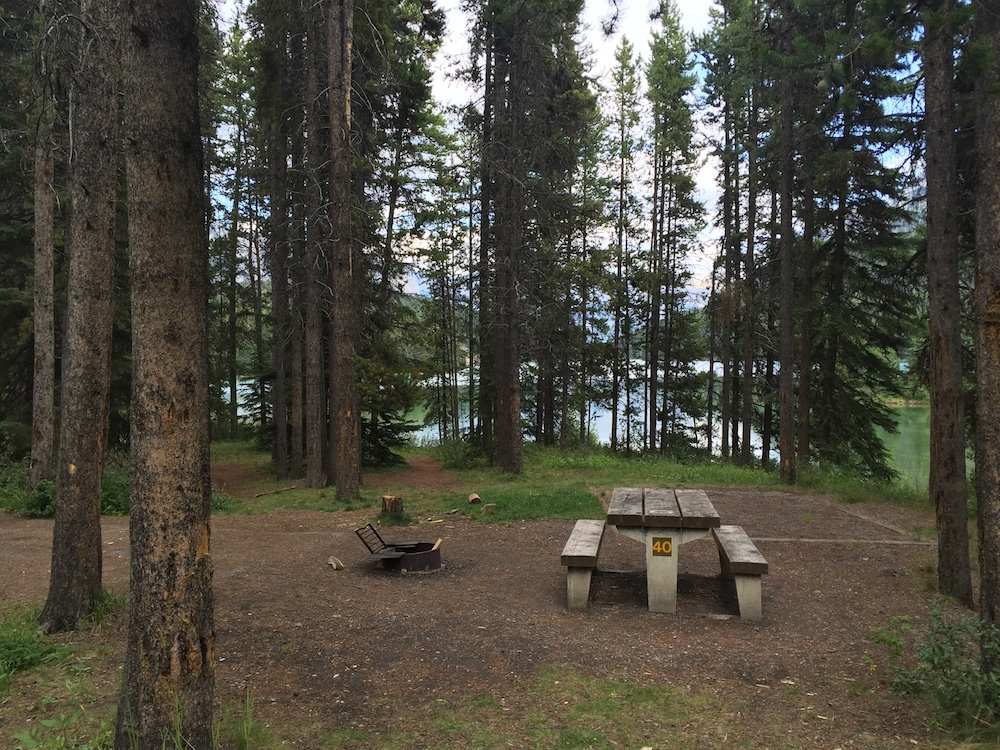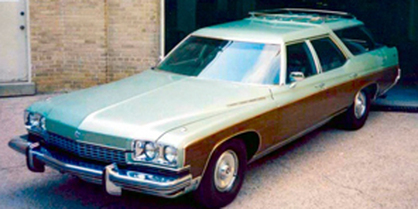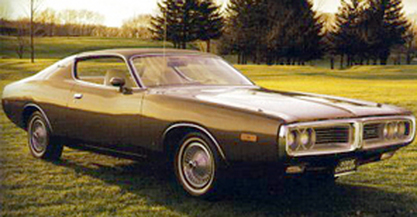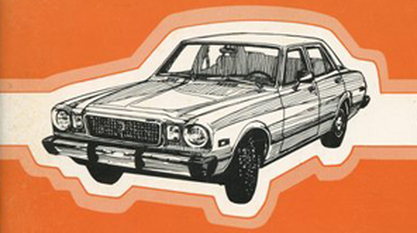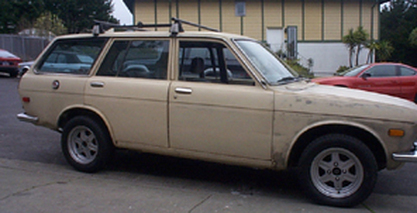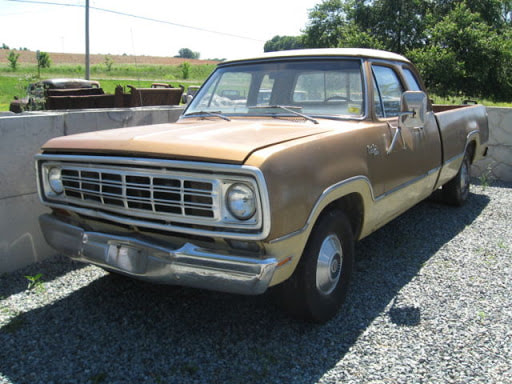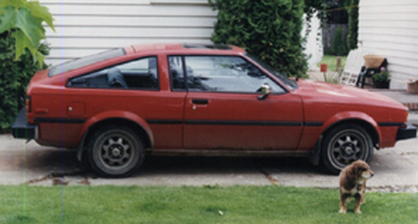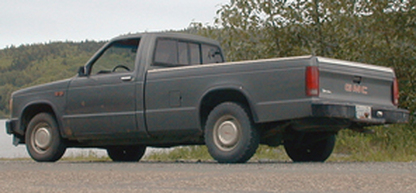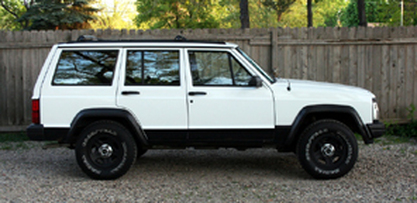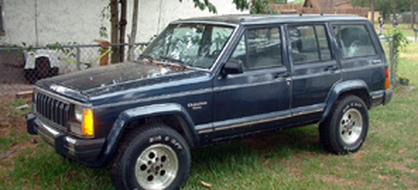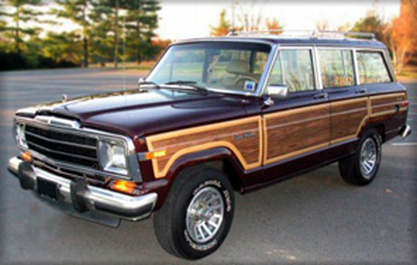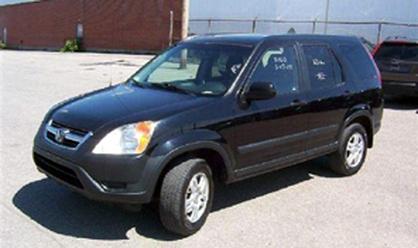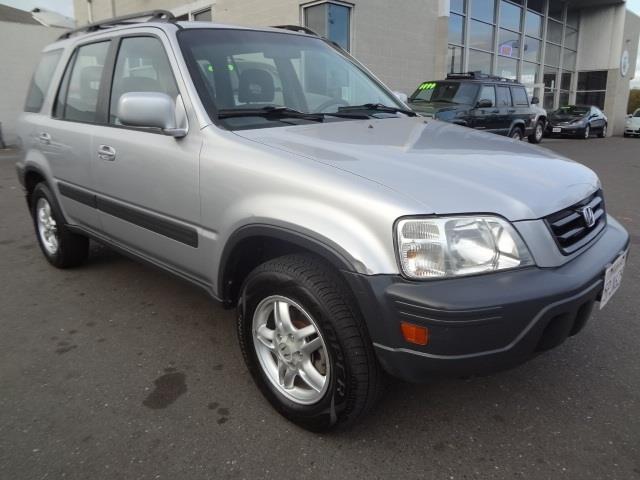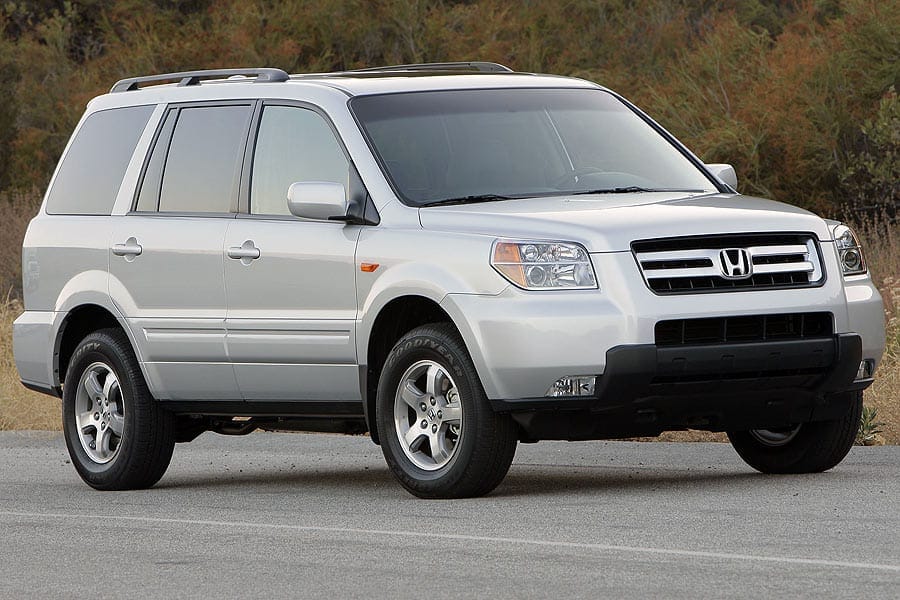People, Place, and Land
|
When I was born in Prince George, BC, my family lived in the same neighbourhood then as I do now with my family. This subdivision sits on the traditional unceded territory of the Lheidli T’enneh, the “people who live where the rivers flow together.” My house is not far from the confluence of the Fraser and Nechako Rivers, and just a few hundred meters away from where the heart of the Lheidli village used to be. As a kid, I knew this place as Fort George Park. Based on the stories and other information we know, the Lheidli Tenneh maintained a seasonal fishing camp here for hundreds or even thousands of years, as well as an older fishing camp about 2km downstream on the Fraser, about where the Simon Fraser bridge now crosses the river. Speaking of Simon Fraser, when The Northwest Company sent him to explore the river that now bears his name, but which the Lheidli called the Lhtakoh, his travel party built an advance camp in 1807 for their journey somewhere near the junction of the Lhtakoh and Nechako Rivers, probably on the eastern side of the confluence. About 20 years later, the Hudson Bay Company had built a fur-trade post, Fort George, on the western side, adjacent to the Lheidli fishing camp and beside Nizainli or Hudson Bay Slough. At this point, the Lheidli fishing camp became a permanent village, and modern wooden buildings appeared as Indigenous traditions responded to the presence of European settlers. The area around Fort George, including most of what is now downtown Prince George, was eventually designated as an Indian Reserve. With the impending arrival of rail in the early 1910s, and the impending development of a setter community, the government agents and Grand Trunk Pacific Railway applied pressure on the Lheidli to sell their reserve lands and move elsewhere. Under controversial circumstances, the so-called sale was completed in 1913 and the Lheidli were moved 20km upriver to a new reserve at Shelley, or Khast'an Lhugel, and all but the cemetery at their old village was turned over to the railway and developers. The Lheidli homes and building were cleared and eventually burned, but the actual village site was never developed as intended. Instead it was used to grow potatoes for a while, bulldozed and shaped into a golf course in the 1940s and 50s, and finally turned into Fort George Park for the BC Centenary in 1958. Other parts of the original reserve became the centre of a new city, Prince George, in 1915, and the area next to the old village, where I now live, was sold to a land speculator named Charles Millar. This neighbourhood was developed into streets and houses in the 1940s and 50s, and is now filled with mature trees. In 2015, for the occasion of Prince George's Centenary, Fort George Park was renamed Lheidli Tenneh Memorial Park. It's use as a park is just one of the layers in the cultural landscape.
|
Some interesting tidbits about your teacher... almost all of this is true!
- I can exhale through my right eyeball, the result of an infection in my tear-duct when I was a kid. I have never had to use this special skill in an emergency situation, although it makes for a nice party trick..
- I have been hit by lightning once. I was working in the woods of northern Alberta (near the Berland River) during a thunderstorm and a ground strike zapped me while I was running for cover across a bog. I didn't feel like I got electrocuted, just had a nauseated sensation and saw blue static electricity crackling away from me and dissipating into the trees. I hid under a sheltering spruce until the storm passed, weeping gently but grateful for life. I worked on my own in the woods back then -- with no phone or radio. Looking back it seems less safe than it did at the time!
"Back in the day" c. 1995
working as an ecosystem geographer near Kispiox, BC |
"Back in the day" -- my first real continuing teacher job -- part-time Art teacher at College Heights Secondary, 1996. I'm pretty sure this was parent-teacher night, as that is the only occasion I can imagine would beg the use of a tie. I borrowed this "giraffe" tie from my father, a retired high school counsellor, and English and Geography teacher.
|
Philosophy
There are a few principles basic principles I strive for in my life and teaching practice:
- self-reliance -- taking responsibility for one's actions; fostering hard-working and hard-wearing characteristics
- interdependence -- an ethic of care; working together with mutual respect for imaginative ends
- balance -- carving space for all of things that bring joy; being willing to sacrifice some rewards in order to pursue deep goals
- curiousity -- asking thoughtful and provocative questions at every turn; turning stones to know what is underneath
More Philosophy in "Turning Stones" -- my Professional Growth Journal • More career stuff in my Curriculum Vitae
Teacher Background
I've taught 7 years at College Heights Secondary, and 15 at D.P. Todd, and more recently I've been coordinating teacher professional development and working in the teacher education program at UNBC. I've also been a husband since 1999 and a dad since 2004. Add all those years up and divide by my IQ and you get a very small number.
Although I set out to become a Social Studies teacher, I have had many enjoyable teaching detours along the way, notably in English, Art, and even some Drama and Career Planning back in the mists of time. I've also enjoyed coaching basketball, fixating on technology and organizational design, and various aspects of leadership. Before I was a teacher I wandered around in the woods, dug in the dirt, looked at plants, and made maps for a living (no kidding).
Binding all these things together has been a lifelong fascination with the natural world, social history, and language. I believe it is this "core" that has drawn me to all of the jobs, hobbies, and pursuits I have joined, and it forms the basis for my ongoing curiousity as a learner/teacher. It also accounts for my interests as a writer, reader, wanderer, and for my devotion to the works of J.R.R. Tolkien.
I love teaching and I love learning. Not all the time, or in every way, but enough that these things haunt me and consume most of my daylight, sometimes to the detriment of everything else.
Although I set out to become a Social Studies teacher, I have had many enjoyable teaching detours along the way, notably in English, Art, and even some Drama and Career Planning back in the mists of time. I've also enjoyed coaching basketball, fixating on technology and organizational design, and various aspects of leadership. Before I was a teacher I wandered around in the woods, dug in the dirt, looked at plants, and made maps for a living (no kidding).
Binding all these things together has been a lifelong fascination with the natural world, social history, and language. I believe it is this "core" that has drawn me to all of the jobs, hobbies, and pursuits I have joined, and it forms the basis for my ongoing curiousity as a learner/teacher. It also accounts for my interests as a writer, reader, wanderer, and for my devotion to the works of J.R.R. Tolkien.
I love teaching and I love learning. Not all the time, or in every way, but enough that these things haunt me and consume most of my daylight, sometimes to the detriment of everything else.
A History in EducationDuchess Park Secondary, Prince George, Class of 1987. This was the back field and rear view of the high school. Duchess was torn down and rebuilt between 2008-2010. The grounds around the school have been home to many schools over the years: Baron Byng Secondary, King George V Elementary, the old PGSS that later became Winton (a "Special" school) and also the Board Office, and now the new Duchess. In Geography we talk about this phenomenon as the "evolution of a cultural landscape."
University of British Columbia (Vancouver, BC) - Bachelor of Arts in English & Geography 1994. The Clock Tower (foreground), Buchanon Tower (left) and Main Library (right) were iconic landmarks in my 4.5 years at UBC, but the Grad Centre (2nd photo) was really a home away from home. It was here that large pots of coffee were consumed (or great draughts of ale on occasion) and "Inklings" styled conversation with great friends occupied many hours each week. This was also a staging area for various adventures into the semi-wilds of the Endowment Lands or weekend trips to the mountains.
Simon Fraser University (Burnaby, BC) - PDP (teacher training program) 1995, Master of Education 2004. The little bench area (right), surrounded by vinemaple, oregon grape, and swordfern, was place of calm and reflection for me during my studies in the Education building. The design of these nooks, and of the grander forms on the SFU campus (left) were the work of architect Arthur Erikson. Like many others, I have a love/hate relationship with his creations, most often love, though. I paid attention to these things in large part because of a book on human-scale architecture I read in 1991, A Pattern Language, by Christopher Alexander. Most of my two stints as an SFU student and two contracts as a sessional instructor were conducted in Prince George as part of their Field Programs, but I got to spend enough time on Burnaby Mountain to form some attachments to place.
University of Northern British Columbia (Prince George, BC) - Since 2019 I've been a student in the Natural Resources and Environmental Studies PhD program. Broadly, my research is in Geography Education. My topic in on place-responsive education and my methodology is type of storywork called Participatory Narrative Inquiry. My supervisor is the amazing Dr. Catherine Nolin. Because I also work in the School of Education, I spend most of my time in the building at the top right of the photo, but I am fond of so many spots on campus; it has a fabulous design in many ways.
The Nice Quote Section“There is something bigger than fact: the underlying spirit, all it stands for, the mood, the vastness, the wildness.” - Emily Carr
"We are such stuff as dreams are made on, and our little life is rounded with a sleep" - William Shakespeare “My friends, love is better than anger. Hope is better than fear. Optimism is better than despair. So let us be loving, hopeful and optimistic. And we’ll change the world.” - Jack Layton, 2011 "Arise, arise, Riders of Theoden! Fell deeds awake: fire and slaughter! Spear shall be shaken, shield shall be splintered, A sword day, a red day, ere the sun rises! Ride now, ride now! Ride to Gondor!" [King Theoden at the Fields of Pellanor] - J.R.R. Tolkien "It is not enough to be industrious; so are the ants. What are you industrious about?" - Henry David Thoreau “In the universe, there are things that are known, and things that are unknown, and in between, there are doors.” - William Blake A History in DNAMy parents, grand-parents, great-grandparents, and so on back many generations are/were ethnic Mennonites. Many of my early ancestors came from what is now Germany and the Netherlands, and were swept up in the Anabaptist movement during the Reformation in the 1500s. The Thielmanns, in particular, appear to have come from the town of Tiel in what is now the Dutch province of Gelderland, from which a branch of the family moved to Breitscheid in what is now the German province of Hesse. It is here that they likely joined the Anabaptists. As with other Anabaptists of the Mennonite variety, my ancestors migrated to Prussia (Danzig and the Vistula Delta) in the 1500s, then to South Russia (Ukraine) in the late 1700s and early 1800s, and finally to North America in the 1890s and 1920s. Most of my ancestors lived in one of the villages shown in the map above, the Molotschna colony in South Russia. They spoke High German at school, work, and church, and a dialect of Low German (called Plautdietscht) at home and among friends. As far as I can tell, Nicholas Thielmann born c. 1645 begat Abraham who begat Abraham, who begat Isaac, who begat Jacob (seriously), who begat Johann, who begat Gerhard, who begat Gerhard, who begat Gerhard, who begat Walter, who begat Glen.
A History in BeardsThe Swiss Army KnifeI have had a swiss army knife on my person or close nearby pretty much every day since 1976. That's when my dad brought one home for me from Switzerland. The tool of choice for MacGyver, the Swiss Army Knife has a special place in my heart. When I pulled it out of my heart, it was even more special.
Vehicles I'd Like to Own??? Dream Vehicle. I think this would be awesome. Let's just say my expectations about vehicles tend towards the utilitarian -- this is where I'd like it to go: https://www.youtube.com/watch?v=CJXTBZLRfR4
Some favourite placesFarm and Forest near Ryder Lake, BC. This is where I was married. It belongs to some friends who let me build a cabin at the back of their property, within earshot of the Chilliwack River in the valley below. I started it anyways, and they finished it. Last I heard there was a skunk living under the cabin and the roof was leaking. There are quite a few trees on this property that I planted, mostly firs, but also some pines, gingko, chestnut, giant sequoia, and a hazelnut that originated on my grandparents' farm in Abootsford. The cabin features a door and windows from my grandparents' farmhouse; their old farm is long gone, the land levelled, and now sprouted with suburban housing.
Where Hwy 16 crosses the Willow River. Some good memories of wandering through the forest, fishing in the river, moving around rocks in the small creek that feeds into the river, and making little camp fires down at the water. There are certainly more spectacular natural wonders in BC, but this curious spot is close to town and I've got a history with it.
Two Jack Lakeside in Banff National Park. We've spent a couple of weeks there over a few summers, and are always trying to get this site. However, it books up online in seconds, so we have to be content to camp across the lane and content ourselves with walking through it with our kayaks on the way into Two Jack Lake.
|
A History in Vehicles1973 Buick Estate Wagon (less avacado than this one). This was our backup family car (the one I was allowed to drive) when I got my license in 1985. A real pig... you could hear the gas flowing to the engine under your feet. Power seats & windows were cool, though, plus I could fit about 9 people in it, which is quite a thrill when you are sixteen and you have a total of 8 friends.
1972 Dodge Charger (mine was green like this but had a vinyl roof & a 318 engine). My dad paid $900 for it in 1986. I drove this in Grade 11 and 12 and for the next few summers until the price of gas, repairs, and speeding tickets caught up with me. I regret not keeping it around, I felt like a real Duke of Hazzard, especially on the backroads. At 90 mph it developed a speed wobble, but this levelled out at 100. That's 160 kmh for the young folk.
1978 Toyota Cressida (silver); my parents' main car and a nice ride -- I loved all Toyotas after this. I smashed it up in 1988, much to our collective regret. I was on a date at the time, and did a U-Turn on the highway looking for a mini-golf place that used to operate south of town. Last date, too, for that relationship. Probably for the best. That accident may have actually saved me a lot of grief. Thanks, Cressida.
1978 Datsun 510 Superwagon -- this photo is a close match although mine was grey. I bought it from my brother-in-law for $1. Drove it for 8 months during my 2nd to last year of university (1992/93) for the price of insurance, gas, and 1 litre of oil before it died. The floor took in water, hence a damp mushroomy smell in the back seat. Everything kind of went at once: lights, brakes, starter, ignition. When the tail lights stopped working I attached flashlights to some rust holes at the back with some bailing wire. When covered with red cellophane and turned on, they almost looked like tail lights from a distance. Although I did not feel particularly safe in a vehicle that always had one tire in the grave, it was also a nice feeling to know that I could simply walk away from it if I had to. The gas gauge was broken, so I had to walk away from it often when I ran out of gas, or push it for a number of blocks to find a gas station. Getting rid of it was tricky -- after a number of phone calls I found an autowrecker that would tow it away for free in exchange for its value as scrap metal. The Rastawagon was the best use of $1 in my life.
1976 Dodge Custom Pickup (this photo is a close match, although mine was uglier). I got mine from a friend Derk who got it from another friend (all free!). The "Golden Dog" (os sometime the "Golden Hind") lasted for a few adventures in 1993/94 but it took every dime I had to keep the tank filled. The carb was wonky and the tires were bald. I lit it on fire once on Whitbey Island, no real damage done, and soon after sold it to my cousin for $200. I spent this money on a single bottle of port which was eventually consumed by the guy who gave me the truck in the first place. I think that's called Karma.
1981 Toyota Corolla. This is actually it. I bought it from my sister in 1994 for $500 and broke it in with a trip to California. This vehicle was one of my favourites. The engine was indestructible (close to 400,000 km when I got rid of it) but everything else eventually fell apart. I had an art class paint it with industrial mistints once, then I painted it purple, then it sat in my driveway for a couple of years before I gave it to some guy for his kids to drive on the back of his farm and practice their stick shift. For all I know it is still running.
1987 GMC pickup. Took this pic at Eaglet Lake. I bought this from a friend Steve for $1000 and drove it from 1997-2001. I liked having the box, which (with a canopy) made a great camper. I replaced the engine in an expensive trip to Saskatchewan to visit my girlfriend (now wife!), and used this truck to move many people in and out of good places and bad. On Sep 11, 2001, I got pulled over by the police and issued a number of notices to fix the vehicle or take it off the road. So, I gave it to Bob Ormond, a teacher at my school, who did the repairs and used it to run his after-school lawn care business for a while.
1993 Jeep Cherokee, bought at the local vehicle auction in 2000 for $5000. Although we loved this SUV like a brother, after chugging along for 10 years it developed significant personality deficits. Yet another Thielmann car sold for scrap metal.
1987 Jeep Cherokee. Teacher/buddy Norm Booth sold this to me for $800 in 2002. It was a decent 2nd vehicle for a few years but started to fall apart, eventually wouldn't start. I sold it to a mechanic for $100 and it was still seen running around town for a couple of years.
1990 Grand Wagoneer. This is the sexiest and dumbest vehicle I've ever had. Really high curb appeal and really bad gas mileage. Still, it was the kind of vehicle that MacGyver would have owned. I paid $4700 for it in 2006 -- far too much but I just had to have it. I spent some time and money working out carburetor issues, but it never quite seemed the powerhouse it should have been. Someone plowed into me in 2008, doing enough damage that the vehicle was considered a write-off, although it still ran ok. ICBC paid me $5000 for it based on what it would cost to find one just like it, so in the end it all worked out just fine. Why would it be worth that much? These Wagoneers get used on Hollywood movies to frame scenes involving either a family with old-timey traditional values or a rugged individual, so used ones are often snatched up for total restoration. This photo is a close match to mine. Nuf said, I'm getting teary-eyed.
2003 Honda CRV. First responsible car in a while. Cost $10000 in Kelowna in 2009 and tight even though it came with 170K km. It has become a bit trashed with the wear and tear that kids bring to a vehicle, but ran great with few issues until I started to use it to tow a tent trailer. A spate of repairs in 2015 (to the tune of $6000) made us wonder if we kept this vehicle too long. 4 cylinder 5 speed manual transmission. 280K km as of 2017.
2001 Honda CRV. Great 2nd Vehicle (my ride). Picked this up a the Surrey Trade-In Centre for $5400 in 2010 with close to 200K km. Runs great although the gas mileage is not great for a 4 cylinder automatic. As of 2016 it was starting to show some real wear and thus it went up for sale at bargain basement price. It went to a real character, a denizen of the forest, and I'm sure it will have new stories to tell.
2007 Honda Pilot. This confirms our transition from Jeeps to Hondas -- three of each so far. Our mechanic really likes the engines on the Pilots, this was one of the deciding factors, along with the towing capacity. We bought this in 2015 from a somewhat sketchy dealer in Coquitlam, one of 2 Pilots in the lower mainland that met our search criteria on Autotrader. So far a great ride and lots of room for the chittlins, but terrible on gas and does not handle with the agility of a CRV. Still, it upped our camping game and seems the right fit for a hefty driver. Update: the engine blew after 190,000 kms. I found a used engine for it and had it installed -- this was expensive but still cheaper than finding a replacement vehicle.
|

